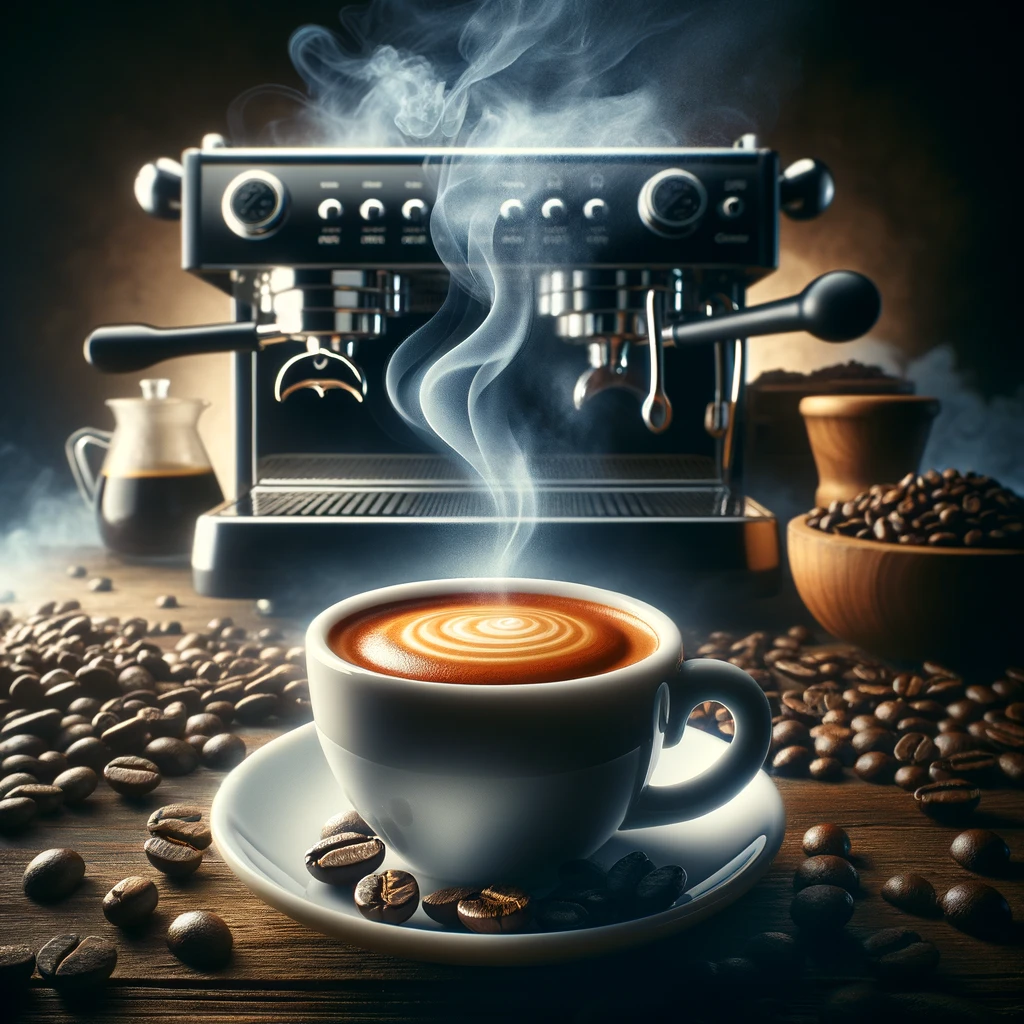This post may contains affiliate links which means I may receive a commission from purchases made through links. Learn more on my affiliate disclaimer.
The Basics of the Best Cold Brew Coffee: Understanding the Process
The best cold brew coffee is a method of coffee preparation that involves soaking coffee grounds in cold water for an extended period of time. Unlike traditional hot brewing methods, which use heat to extract flavors quickly, cold brewing takes a more gradual approach. This slow extraction process results in a smoother and less acidic cup of coffee.
To make best cold brew coffee, start by coarsely grinding your chosen coffee beans. Coarser grounds are preferred for cold brewing because they allow for better flavor extraction without over-extraction or bitterness. Next, combine the ground coffee with cold water in a container and let it steep for at least 12 hours, although some recipes recommend up to 24 hours.
During the soaking process, the water gradually extracts the flavors from the coffee grounds, resulting in a concentrated liquid known as cold brew concentrate. Once steeped to your desired strength, strain out the grounds using a fine-mesh sieve or cheesecloth and transfer the concentrate to another container for storage.
By understanding this basic process of cold brewing, you can experiment with different variables such as grind size and soaking time to achieve your desired flavor profile. Whether you prefer a bold and robust cup or something milder and smoother, mastering this technique allows you to create delicious homemade best cold brew coffee that suits your taste preferences perfectly.
Selecting the Right Coffee Beans for the Best Cold Brew Coffee
When it comes to the best cold brew coffee, selecting the right beans is essential for achieving a smooth and flavorful result. While any type of coffee can technically be used for the best cold brew coffee, certain characteristics are more desirable than others. For starters, opt for medium to dark roast beans as they tend to have richer and bolder flavors that hold up well during the extended soaking (aka steeping) process of cold brewing.
Another important factor to consider is the origin of the coffee beans. Different regions produce distinct flavor profiles, so you may want to experiment with various origins to find your preferred taste. For example, African coffees often exhibit fruity and floral notes, while South American varieties are known for their nutty and chocolatey undertones. Ultimately, it’s a matter of personal preference and experimentation.
Lastly, pay attention to the freshness of your coffee beans. Ideally, choose whole bean options and grind them just before brewing. This ensures maximum flavor extraction from the beans. Look for bags with a roast date listed on them or purchase from local roasters who can provide freshly roasted beans.
By carefully considering these factors – roast level, origin, and freshness – you can select coffee beans that will complement your best cold brew coffee process and deliver a deliciously refreshing cup every time without relying on traditional conjunctive adverbs or phrases indicating summary or conclusion paragraphs
Grinding Techniques for Cold Brew Coffee
Grinding coffee beans for the best cold brew coffee requires a specific technique to achieve the desired flavor and strength. The grind size plays a crucial role in determining how the coffee extracts during the brewing process. For cold brew, it is recommended to use a coarse grind. This allows for a slower extraction, resulting in a smoother and less acidic cup of coffee.
When grinding your beans, aim for consistency in particle size. Unevenly ground coffee can lead to over-extraction or under-extraction, affecting the overall taste of your best cold brew coffee. Using a burr grinder is highly recommended as it provides more control over the grind size compared to blade grinders.
Experimenting with different grind sizes can help you find the perfect balance for your personal preference. If your cold brew tastes weak or watery, try using slightly finer grounds next time. On the other hand, if it tastes too strong or bitter, opt for coarser grounds.
Remember that grinding techniques may vary depending on factors such as bean origin and roast level. It’s always best to adjust based on taste and experiment until you find what works best for you.
Water Matters: Choosing the Best Water for Cold Brew
Choosing the right water for the best cold brew coffee is crucial in order to achieve the best flavor and extraction. Tap water may contain impurities or chemicals that can affect the taste of your brew, so it’s recommended to use filtered or bottled water. Filtered water helps remove any chlorine or other contaminants that could alter the flavor profile of your cold brew.
When selecting bottled water, look for options that have a neutral pH level and low mineral content. Water with high mineral content can result in a more bitter or metallic taste in your cold brew. It’s also important to avoid using distilled water as it lacks minerals necessary for optimal extraction.
Additionally, consider the temperature of the water you use for brewing. For the best cold brew coffee typically requires room temperature or chilled water to extract flavors slowly over time. Using hot or boiling water can lead to over-extraction and bitterness in your final cup.
By paying attention to the quality and characteristics of the water you use, you can enhance the overall taste and experience of your cold brewed coffee without any unwanted flavors interfering with its natural nuances.
- Tap water may contain impurities or chemicals that can affect the taste of your cold brew
- Filtered water helps remove chlorine and contaminants that could alter the flavor profile
- Look for bottled water with a neutral pH level and low mineral content to avoid bitterness or metallic taste
- Avoid using distilled water as it lacks minerals necessary for optimal extraction
- Use room temperature or chilled water for cold brew to extract flavors slowly over time
- Using hot or boiling water can lead to over-extraction and bitterness in your final cup
Finding the Ideal Coffee-to-Water Ratio for the Best Cold Brew Coffee
Finding the ideal coffee-to-water ratio is crucial in achieving the best cold brew coffee. The ratio determines the strength and flavor of your cold brew, so it’s important to get it right. Generally, a good starting point is using a 1:4 coffee-to-water ratio. This means for every cup of ground coffee, you’ll need four cups of water.
However, this ratio can be adjusted based on personal preference. If you prefer a stronger brew, you can increase the amount of coffee used or decrease the amount of water. On the other hand, if you prefer a milder brew, you can do the opposite.
Experimenting with different ratios is key to finding your ideal taste profile. You might find that a 1:3 ratio produces a bolder and more concentrated flavor while a 1:5 ratio creates a smoother and lighter taste.
Remember that finding the right balance may take some trial and error, but once you discover your preferred coffee-to-water ratio for the best cold brew coffee, it will become second nature when brewing your favorite beverage at home.
The Importance of Steeping Time in Cold Brewing
When it comes to the best cold brew coffee, the steeping time plays a crucial role in determining the flavor and strength of your brew. Unlike hot brewing methods that extract flavors quickly, cold brewing requires a longer steeping period to achieve optimal results. The process involves immersing coarsely ground coffee beans in cold water for an extended period, typically ranging from 12 to 24 hours.
During this steeping time, the coffee grounds release their flavors slowly into the water, resulting in a smoother and less acidic brew compared to traditional hot brewing methods. The length of the steeping time allows for a more gradual extraction process, which brings out different flavor compounds and reduces bitterness. It also gives you greater control over the final taste profile by adjusting the duration based on personal preference.
Finding the perfect steeping time for the best cold brew coffee can be a matter of trial and error since it depends on various factors such as bean origin, roast level, grind size, and desired strength. Generally, shorter steeping times around 12 hours produce lighter-bodied coffees with subtle flavors. On the other hand, longer durations closer to 24 hours result in bolder and more robust brews. Experimentation is key to discovering your ideal balance between acidity levels and flavor intensity when it comes to selecting your preferred steeping time.
By understanding how important steeping time is in the best cold brew coffee, you can elevate your home-brewed experience by fine-tuning each batch according to your taste preferences. Whether you prefer a milder or stronger cup of joe with nuanced flavors or bold notes dominating your palate – experimenting with different durations will help you craft that perfect glass of refreshing cold brew every single time without relying solely on chance or guesswork.
Cold Brew Equipment: Must-Haves and Nice-to-Haves
When it comes to the best cold brew coffee equipment, there are a few must-haves that will ensure a successful brewing process. First and foremost, you’ll need a large container or pitcher with a tight-fitting lid. This will allow you to steep your coffee grounds in water without any leaks or spills. Additionally, having a fine-mesh sieve or cheesecloth for straining the brewed coffee is essential to remove any sediment or particles.
Another important piece of equipment is a good quality grinder. Grinding your coffee beans just before brewing ensures maximum flavor extraction and freshness. Look for a burr grinder rather than a blade grinder, as burr grinders produce more consistent particle sizes, resulting in better tasting cold brew.
While not necessarily essential, there are some nice-to-have accessories that can enhance your cold brew experience. For example, investing in an adjustable temperature kettle allows you to control the water temperature during the brewing process. This can be particularly useful if you prefer experimenting with different temperatures to achieve different flavor profiles.
A dedicated cold brew maker is another convenient option for making the best cold brew coffee and for those who regularly enjoy this refreshing beverage. These devices often come with built-in filters and easy-to-use mechanisms for steeping and pouring the coffee.
Remember that while having the right equipment is important, it’s ultimately the quality of your ingredients and technique that will determine the taste of your best cold brew coffee. So don’t forget to select high-quality beans and experiment with different ratios and steeping times until you find your perfect cup of chilled goodness!
Straining and Filtering Cold Brew Coffee
Straining and filtering for the best cold brew coffee is an essential step in the brewing process to ensure a smooth and clean final product. After steeping the coffee grounds in water for an extended period of time, it’s important to remove any sediment or particles that may have been extracted. This can be done using various methods such as using a fine mesh sieve, cheesecloth, or even specialized cold brew filters.
When straining for the best cold brew coffee, start by pouring the mixture through a coarse sieve to catch larger grounds. This will help prevent them from ending up in your final cup of coffee. Next, use a finer mesh sieve or cheesecloth to strain out smaller particles and sediments. It’s important to take your time during this process and allow gravity to do most of the work rather than forcing the liquid through the filter.
If you prefer a clearer and cleaner cup for your best cold brew coffee, consider investing in specialized cold brew filters or bags designed specifically for this purpose. These filters are typically made with very fine mesh material that effectively removes even the tiniest particles from your brewed coffee. They are easy to use and can greatly improve the overall quality of your cold brew.
By taking care when straining and filtering your best cold brew coffee, you’ll be left with a deliciously smooth and refreshing beverage free from unwanted sediments or particles. Remember to experiment with different methods and find what works best for you in terms of taste preference and convenience. Happy brewing!
Cold Brew Serving Suggestions: Ice, Milk, and Sweeteners
When it comes to serving your best cold brew coffee, there are a few options to consider. First, let’s talk about ice. Adding ice cubes to your cold brew can help chill the drink and dilute it slightly, giving it a refreshing and thirst-quenching quality. You can use regular ice cubes or get creative with flavored ones like coffee-infused or fruit-infused varieties for an extra burst of flavor.
Next up is milk. Cold brew pairs well with various types of milk, such as dairy milk, almond milk, oat milk, or coconut milk. The addition of milk adds creaminess and can mellow out any bitterness in the coffee. Experiment with different ratios to find your preferred level of richness and taste.
Lastly, let’s discuss sweeteners. While best cold brew coffee is known for its smoothness and low acidity, some people still prefer adding a touch of sweetness to their drink. Popular choices include simple syrup (a mixture of sugar dissolved in water), honey, agave nectar, or flavored syrups like vanilla or caramel. Start with a small amount and adjust according to your personal preference.
Remember that these suggestions are just starting points – feel free to mix and match until you find the perfect combination that suits your taste buds!
Storing and Preserving Cold Brew for Extended Enjoyment
When it comes to storing and preserving your best cold brew coffee for extended enjoyment, there are a few key considerations to keep in mind. First and foremost, it’s important to store your cold brew properly to maintain its freshness and flavor. The best way to do this is by transferring the cold brew into an airtight container, such as a glass jar or bottle with a tight-fitting lid. This will help prevent any oxidation or exposure to air that can lead to degradation of the flavors.
Another factor to consider is the temperature at which you store your cold brew. Ideally, you should refrigerate your cold brew after brewing it. Cold temperatures help slow down the process of oxidation and microbial growth, keeping your cold brew fresh for longer periods of time. Additionally, storing your cold brew in the refrigerator helps preserve its smoothness and low acidity.
Lastly, when storing and preserving your cold brew for extended enjoyment, it’s important not to keep it for too long. While stored properly in the refrigerator, most experts recommend consuming homemade cold brew within 1-2 weeks for optimal taste and freshness. After this period, the flavors may start deteriorating gradually.
By following these guidelines on proper storage techniques and consumption timelines, you can ensure that your homemade cold brew remains delicious and enjoyable over an extended period of time without losing its unique characteristics.
Frequently Asked Questions (FAQ’s)
How long can I store cold brew coffee?
Cold brew coffee can be stored in the refrigerator for up to 2 weeks.
Can I store cold brew coffee at room temperature?
It is not recommended to store cold brew coffee at room temperature as it can spoil quickly.
How should I store cold brew coffee?
Your best cold brew coffee should be stored in an airtight container or bottle in the refrigerator to maintain its freshness.
Can I freeze cold brew coffee?
Yes, you can freeze your best cold brew coffee in ice cube trays or an airtight container for a longer shelf life.
How long does frozen cold brew coffee last?
Frozen cold brew coffee can last up to 3 months in the freezer.
Can I dilute cold brew coffee before storing?
It is not recommended to dilute cold brew coffee before storing as it may affect the taste and freshness.
Can I add milk or sweeteners to cold brew coffee before storing?
It is best to add milk or sweeteners to cold brew coffee just before serving, as they may alter the flavor and texture over time.
Is it safe to drink cold brew coffee that has been stored for a long time?
While cold brew coffee can be stored for an extended period, it is always recommended to check for any signs of spoilage before consuming.
Can I reheat cold brew coffee?
The best cold brew coffee is typically enjoyed cold, but you can reheat it if desired. However, note that reheating may alter the taste and aroma.
Can I use flavored coffee beans for cold brew?
Yes, flavored coffee beans can be used for cold brew, but keep in mind that the flavor may become diluted during the steeping process.





